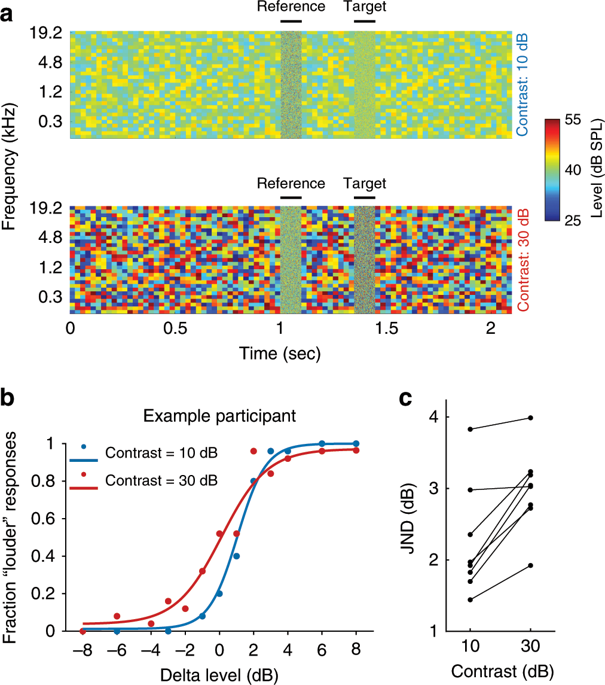当前位置:
X-MOL 学术
›
Nat. Commun.
›
论文详情
Our official English website, www.x-mol.net, welcomes your
feedback! (Note: you will need to create a separate account there.)
Neural circuits underlying auditory contrast gain control and their perceptual implications.
Nature Communications ( IF 14.7 ) Pub Date : 2020-01-16 , DOI: 10.1038/s41467-019-14163-5 Michael Lohse 1 , Victoria M Bajo 1 , Andrew J King 1 , Ben D B Willmore 1
Nature Communications ( IF 14.7 ) Pub Date : 2020-01-16 , DOI: 10.1038/s41467-019-14163-5 Michael Lohse 1 , Victoria M Bajo 1 , Andrew J King 1 , Ben D B Willmore 1
Affiliation

|
Neural adaptation enables sensory information to be represented optimally in the brain despite large fluctuations over time in the statistics of the environment. Auditory contrast gain control represents an important example, which is thought to arise primarily from cortical processing. Here we show that neurons in the auditory thalamus and midbrain of mice show robust contrast gain control, and that this is implemented independently of cortical activity. Although neurons at each level exhibit contrast gain control to similar degrees, adaptation time constants become longer at later stages of the processing hierarchy, resulting in progressively more stable representations. We also show that auditory discrimination thresholds in human listeners compensate for changes in contrast, and that the strength of this perceptual adaptation can be predicted from physiological measurements. Contrast adaptation is therefore a robust property of both the subcortical and cortical auditory system and accounts for the short-term adaptability of perceptual judgments.
中文翻译:

听觉对比度增益控制的神经回路及其感知影响。
尽管环境统计数据随着时间的推移出现很大波动,但神经适应使感官信息能够在大脑中得到最佳表达。听觉对比度增益控制是一个重要的例子,它被认为主要来自皮层处理。在这里,我们展示了小鼠听觉丘脑和中脑中的神经元表现出强大的对比度增益控制,并且这是独立于皮质活动而实现的。尽管每个级别的神经元都表现出相似程度的对比度增益控制,但适应时间常数在处理层次结构的后期变得更长,从而导致逐渐更稳定的表示。我们还表明,人类听众的听觉辨别阈值可以补偿对比度的变化,并且可以通过生理测量来预测这种感知适应的强度。因此,对比度适应是皮层下和皮层听觉系统的强大特性,并且解释了知觉判断的短期适应性。
更新日期:2020-01-17
中文翻译:

听觉对比度增益控制的神经回路及其感知影响。
尽管环境统计数据随着时间的推移出现很大波动,但神经适应使感官信息能够在大脑中得到最佳表达。听觉对比度增益控制是一个重要的例子,它被认为主要来自皮层处理。在这里,我们展示了小鼠听觉丘脑和中脑中的神经元表现出强大的对比度增益控制,并且这是独立于皮质活动而实现的。尽管每个级别的神经元都表现出相似程度的对比度增益控制,但适应时间常数在处理层次结构的后期变得更长,从而导致逐渐更稳定的表示。我们还表明,人类听众的听觉辨别阈值可以补偿对比度的变化,并且可以通过生理测量来预测这种感知适应的强度。因此,对比度适应是皮层下和皮层听觉系统的强大特性,并且解释了知觉判断的短期适应性。











































 京公网安备 11010802027423号
京公网安备 11010802027423号